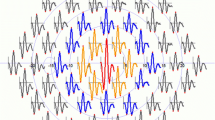Abstract
Purpose: To measure and compare the difference of multifocal electroretinography (mERG) in control subjects and patients with central serous chorio-retinopathy(CSCR) and assessing the reproducibility of the multifocal electroretinography. Methods: Sixteen cases of control subjects and 12 cases of central serous chorio-retinopathy were tested with the Visual Evoked Response Imaging System science™4.2 made by EDI company of America. The results of the left eye of each control subject and patient were used for statistical evaluation by the Mann–Whitney U test. Repeat measurements were performed on 11 control subjects. Wilcoxon technique were used to quantify the reproducibility of the test. Results: The P1 waveform average response density of 1–3 rings in central serous chorio-retinopathy were decreased statistically. There was no significant difference between repeat measurements on 11 individuals. Conclusion: Multifocal electroretinography can be used to quantify the visual function of the affected area in chorio-retinopathy and showed good agreement in the data distribution for the repeat measurements.
Similar content being viewed by others
References
Sandberg MA, Ariel M. A hand-held two channel stimulator ophthalmoscope. Arch Ophthalmol 1979; 95: 1881–1883.
Parks S, Keating D, Williamson TH, et al. Functional imaging of the retina using the multifocal eletroretinograph: a control study. Br J Ophthalmol 1996; 80: 831–4.
Sutter EE, Tran D. The field topography of ERG components in man-I. The photopic luminance response. Vision Res 1992; 32: 433–6.
Jacobi PC, Mlezek KD, Zrenner E. Experiences with the international standard for clinical ectroretinography: normative values for clinical practice, interindividual and intraindividual variations and possibile extension. Doc Ophthalmol 1993; 85: 95–114.
Hasegawa S, Obsbima A, Hayakawa Y, et al. Multifocal eletroretinogram in patients with branch retinal artery occlusion. Invest Ophthalmol Vis Sci. 2001; 42: 298–304.
Sutter EE. The interpretation of multifocal binary kernels. Doc Ophthalmol 2000, 100: 49–75.
Marmor MF, Tan F. Central serous chorioretinopathy: Bilateral multifocal electroretinographic abnormalities. Arch Ophthalmol 1999; 117: 184–8.
Parks S, Keating D, Williamson TH, et al. Functional imaging of the retina using the multifocal eletroretinograph: a control study. Br J Ophthalmol 1996; 80: 831–4.
Author information
Authors and Affiliations
Rights and permissions
About this article
Cite this article
Zhang, W., Zhao, K. Multifocal electroretinography in central serous chorio-retinopathy and assessment of the reproducibility of the multifocal electroretinography. Doc Ophthalmol 106, 209–213 (2003). https://doi.org/10.1023/A:1022592310917
Issue Date:
DOI: https://doi.org/10.1023/A:1022592310917




